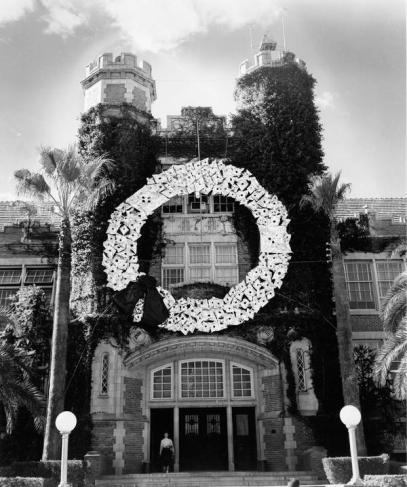This article was written by Jeffrey Henley, a graduate student who has been working with the Florida State University Historic Photograph Collection with Heritage & University Archives since September 2018.
The FSU Historic Photograph Collection in the Heritage & University Archives at Florida State University contains in excess of 250,000 images and negatives. The collection houses a number of different types of images produced from the late nineteenth century through approximately 2010. The majority of the images were produced in the 1950s and 1960s. The challenges to processing this collection generally center on the issue of its size and diversity of photographs. An issue with provenance exists due to the photographs having been collected without strict documentation. What is known, though, is the overwhelming majority of the photographs were produced by an entity within or associated with Florida State University. While the provenance of the collection is also a challenge, this issue is not at the forefront of dealing with the collection. Due to the way it had been collected over time as many different collections, it had not been organized as a coherent archival collection, but rather was kept in a variety of storage entities.

I began working with Series 5, which was a mixture of prints and negatives. While the contents of the remaining fourteen boxes were generally in alphabetical order by subject, they still needed to be checked to make sure they were correct and I also discovered many of the subjects had additional titles for clarification. These categories then had to be organized within sub-categories. I noticed many of the prints and negatives (not all) had additional markings to indicate some sort of numerical system that was being used by the photographer to organize them. Discovering this system made the task of putting matched prints and negatives together in the boxes. I do not know how many prints and negatives were in those fourteen boxes, however it took me about four and half to five months to reprocess them. The fourteen boxes actually expanded to fifteen boxes due to a number of prints and negatives being stuffed into storage envelopes. I rehoused each print, and occasional negative, in new storage envelopes. Series 5 was completed in late March 2019, however due to space and other pending projects, the boxes were left in place until such time I could come back to them and fully incorporate them into the collection both physically and in the finding aid. I spent the rest of the semester working on research requests and digitization projects for the Heritage & University Archives.

The Alumni Association Collection appeared to be a more unique collection than the General Photograph Collection. The decision was made to keep the Alumni Association Collection as its own entity, but Sandra decided the best course of action for the General Photograph Collection was to merge it into the Historic Photograph Collection. One issue that we had to take into consideration before moving forward was that roughly three-quarters of the photographs in the General Photograph Collection had been digitized and were part of the finding aid for the collection down to the item level.

Upon my return for the spring semester 2020, I reviewed the floor plan for the collection and received approval from Sandra to proceed with the actual merging of the collections. Over the course of the next six or seven weeks, I meticulously merged the General Photograph Collection into the Historic Photograph Collection, over 800 photographs, and accounted for each one on at least three different spreadsheets. One spreadsheet was reserved for tracking the digitized photographs, one was used to update the finding aid, and the other was a back up, in essence, to the finding aid tracker. Doing it this way slowed the process down significantly, however I thought the time was worth avoiding a serious mistake that could undo months of work.
